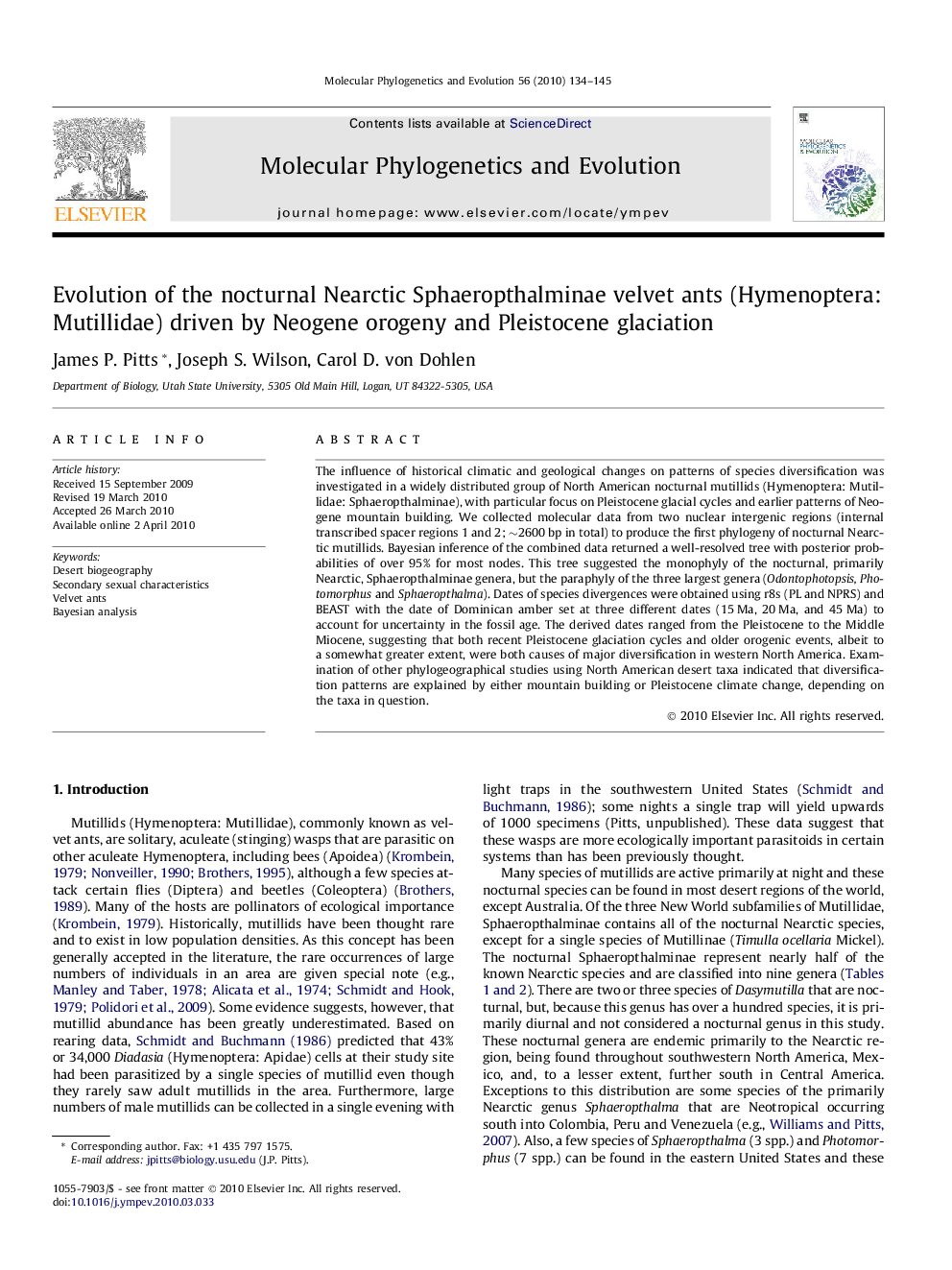| Article ID | Journal | Published Year | Pages | File Type |
|---|---|---|---|---|
| 2834432 | Molecular Phylogenetics and Evolution | 2010 | 12 Pages |
The influence of historical climatic and geological changes on patterns of species diversification was investigated in a widely distributed group of North American nocturnal mutillids (Hymenoptera: Mutillidae: Sphaeropthalminae), with particular focus on Pleistocene glacial cycles and earlier patterns of Neogene mountain building. We collected molecular data from two nuclear intergenic regions (internal transcribed spacer regions 1 and 2; ∼2600 bp in total) to produce the first phylogeny of nocturnal Nearctic mutillids. Bayesian inference of the combined data returned a well-resolved tree with posterior probabilities of over 95% for most nodes. This tree suggested the monophyly of the nocturnal, primarily Nearctic, Sphaeropthalminae genera, but the paraphyly of the three largest genera (Odontophotopsis, Photomorphus and Sphaeropthalma). Dates of species divergences were obtained using r8s (PL and NPRS) and BEAST with the date of Dominican amber set at three different dates (15 Ma, 20 Ma, and 45 Ma) to account for uncertainty in the fossil age. The derived dates ranged from the Pleistocene to the Middle Miocene, suggesting that both recent Pleistocene glaciation cycles and older orogenic events, albeit to a somewhat greater extent, were both causes of major diversification in western North America. Examination of other phylogeographical studies using North American desert taxa indicated that diversification patterns are explained by either mountain building or Pleistocene climate change, depending on the taxa in question.
